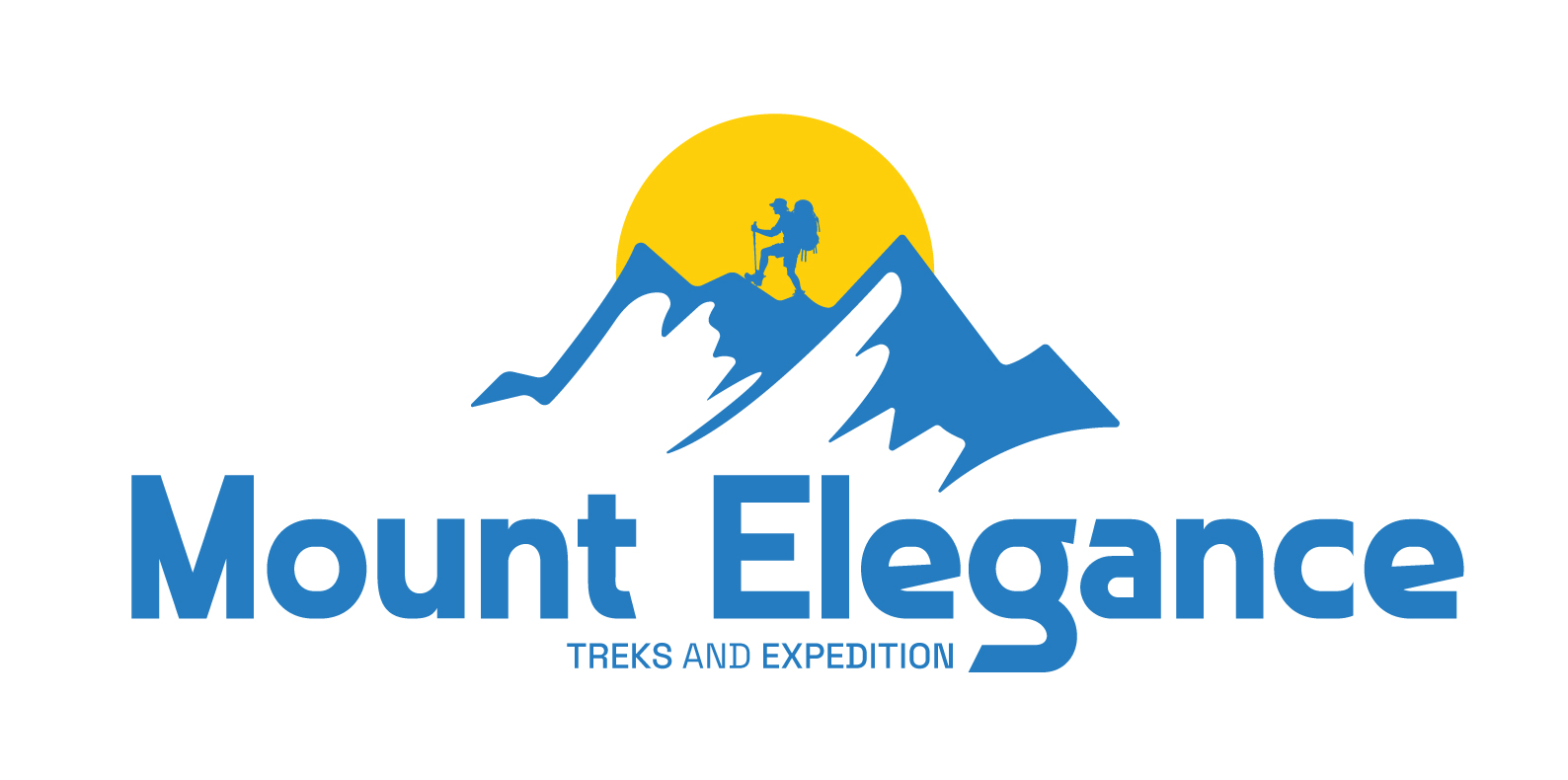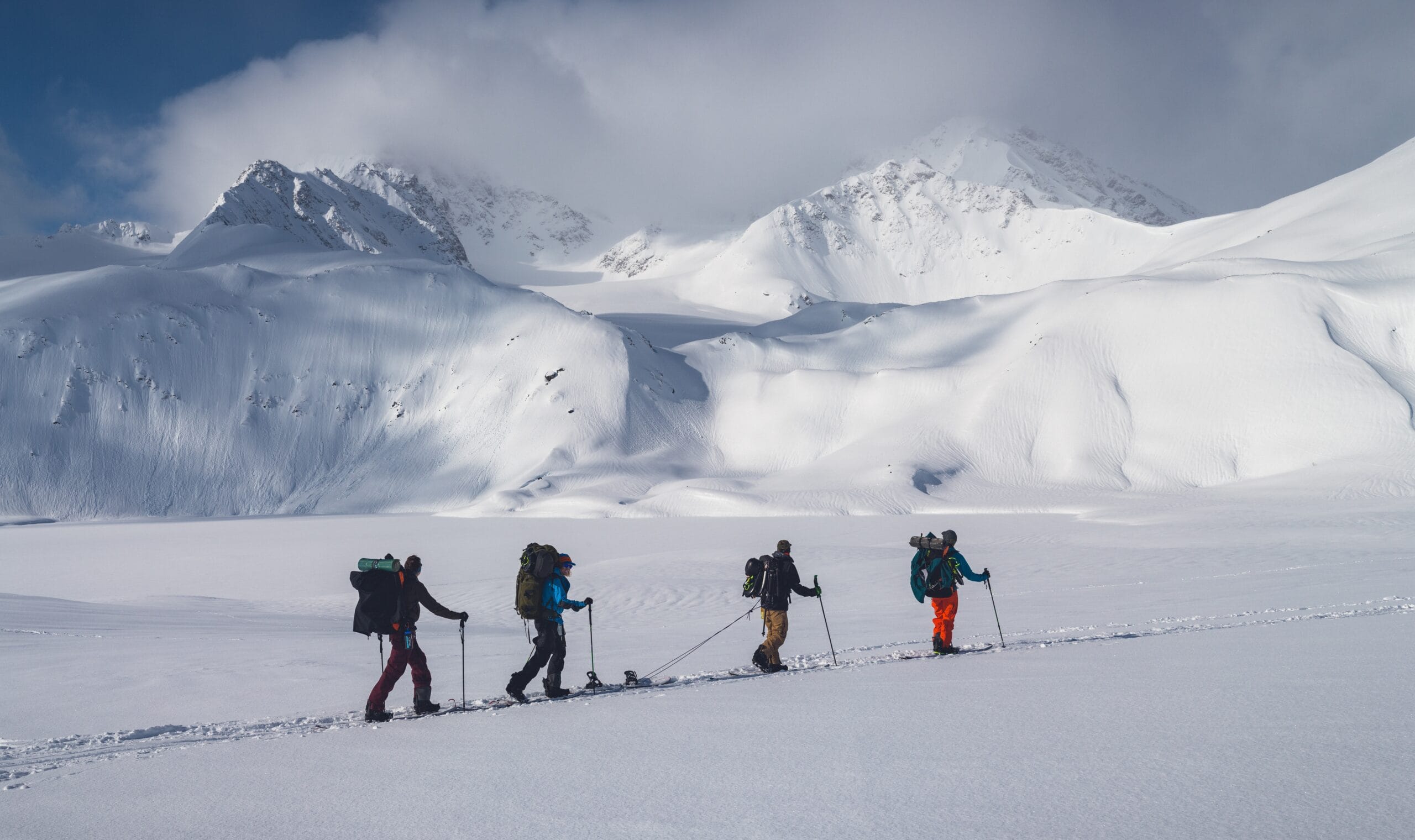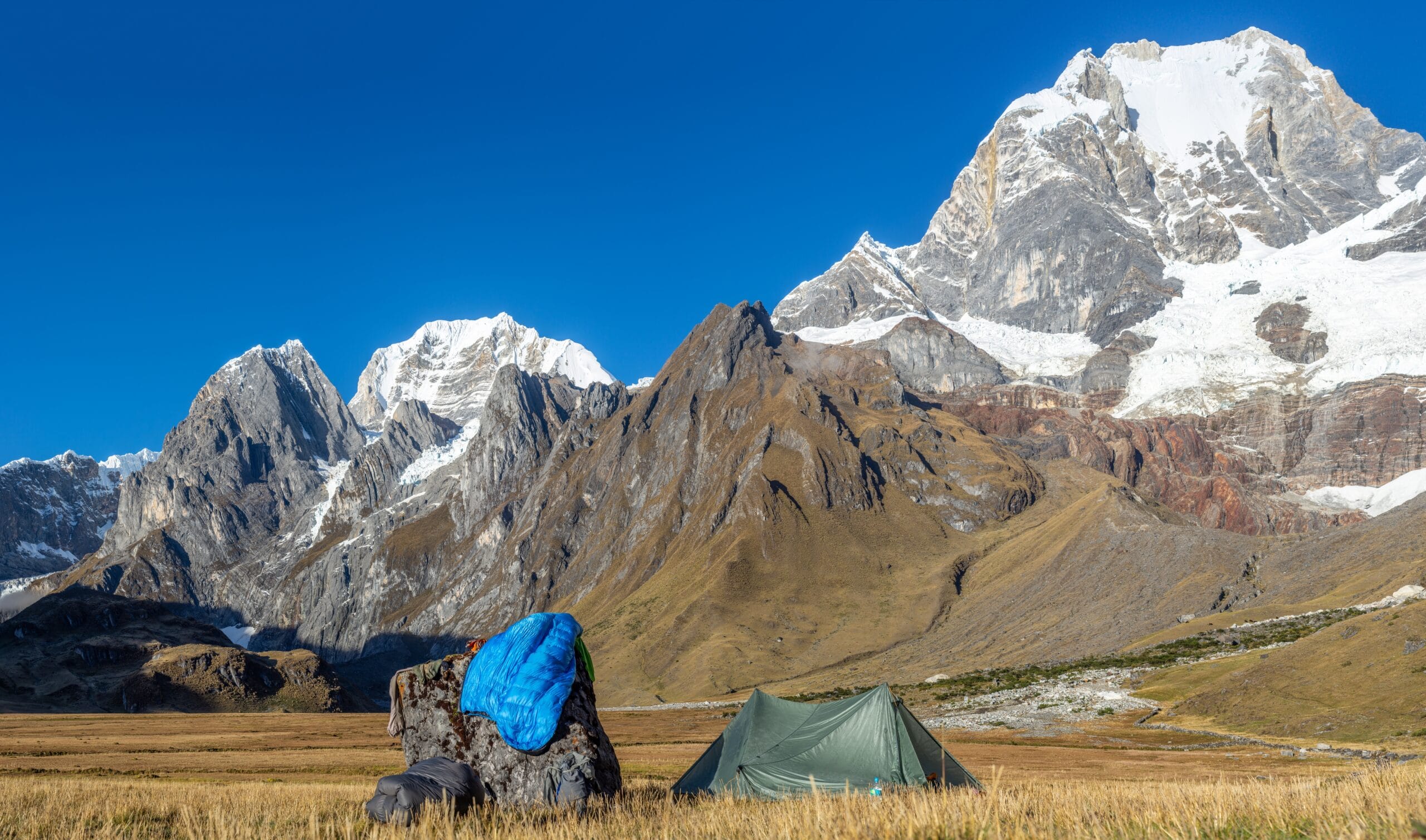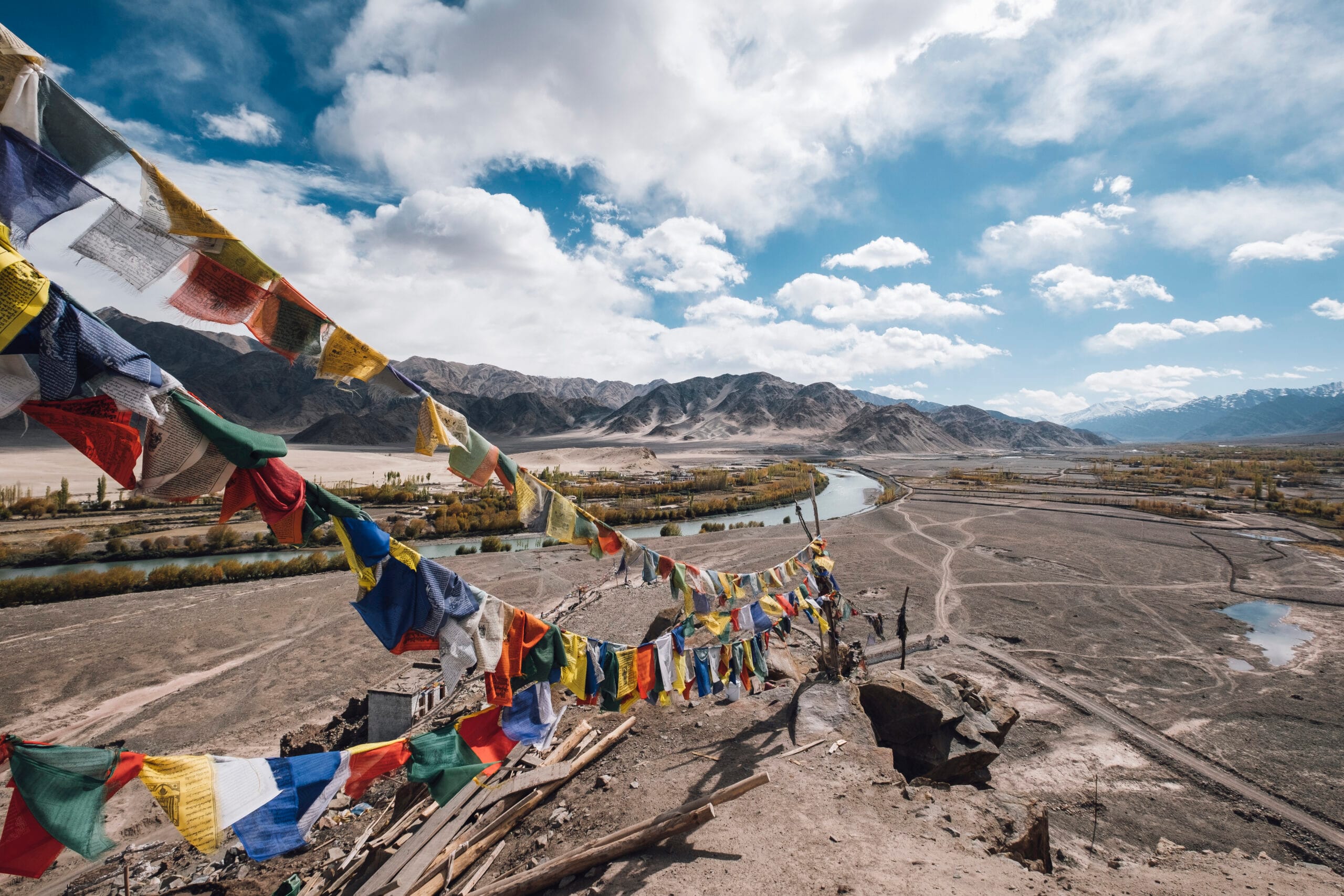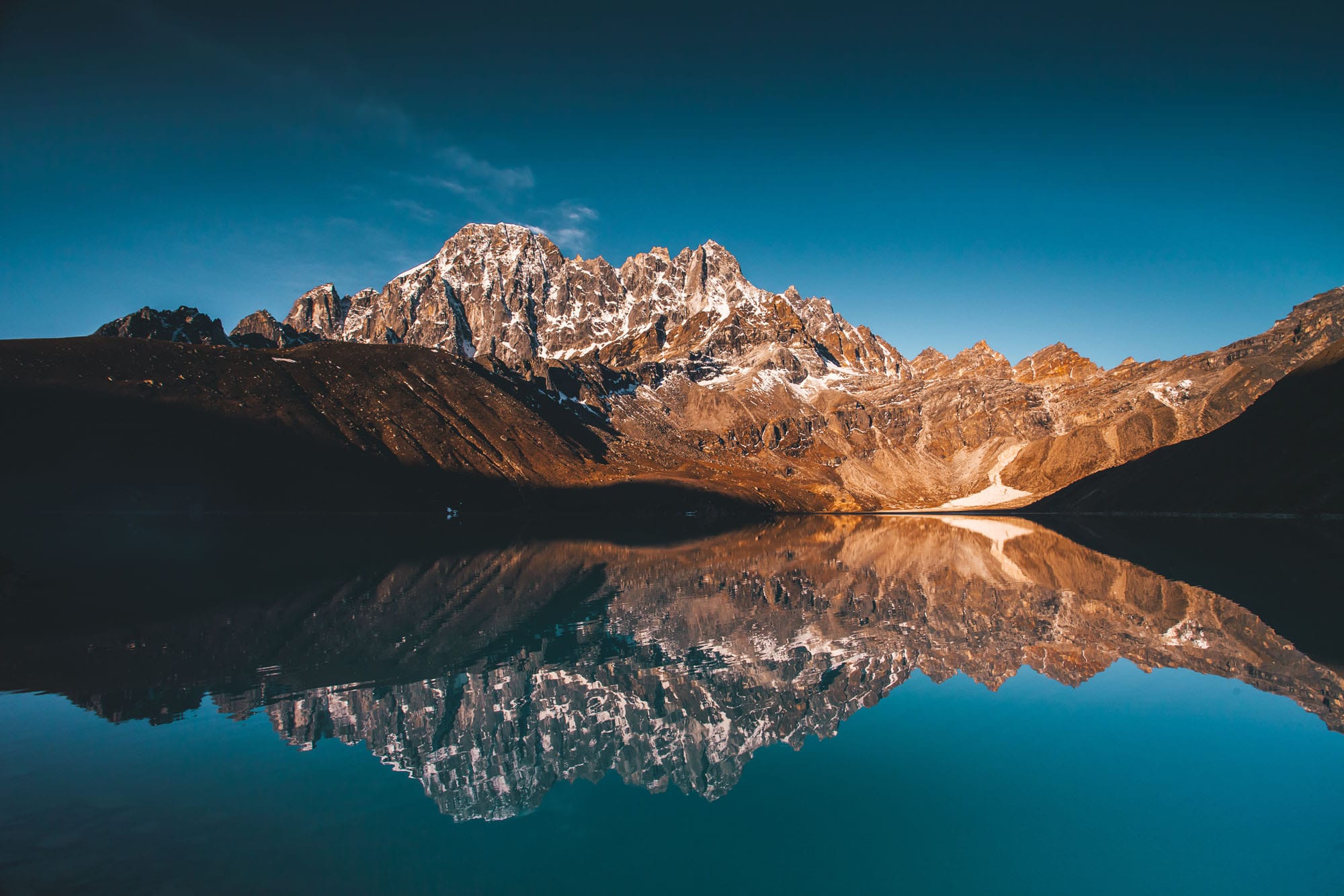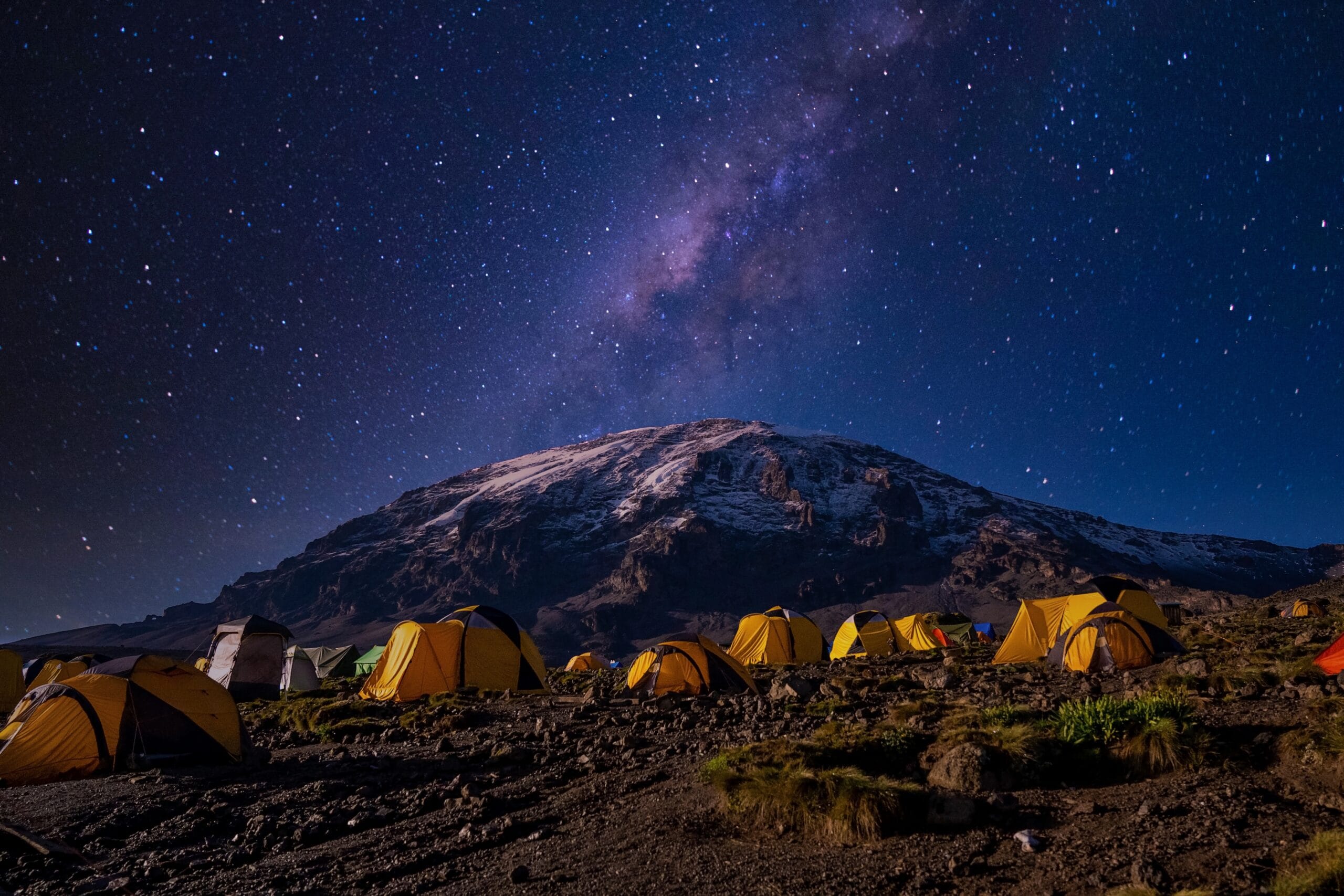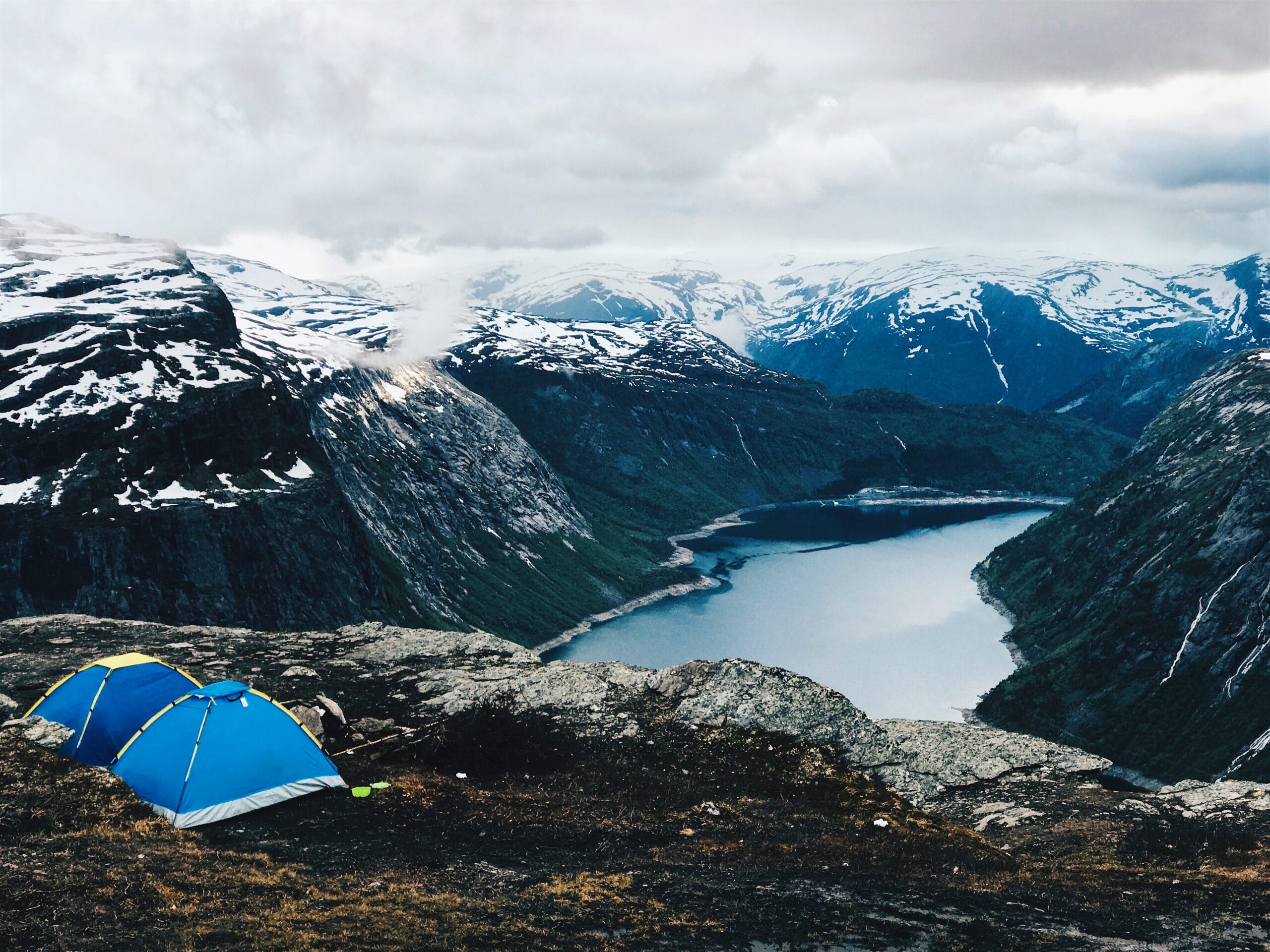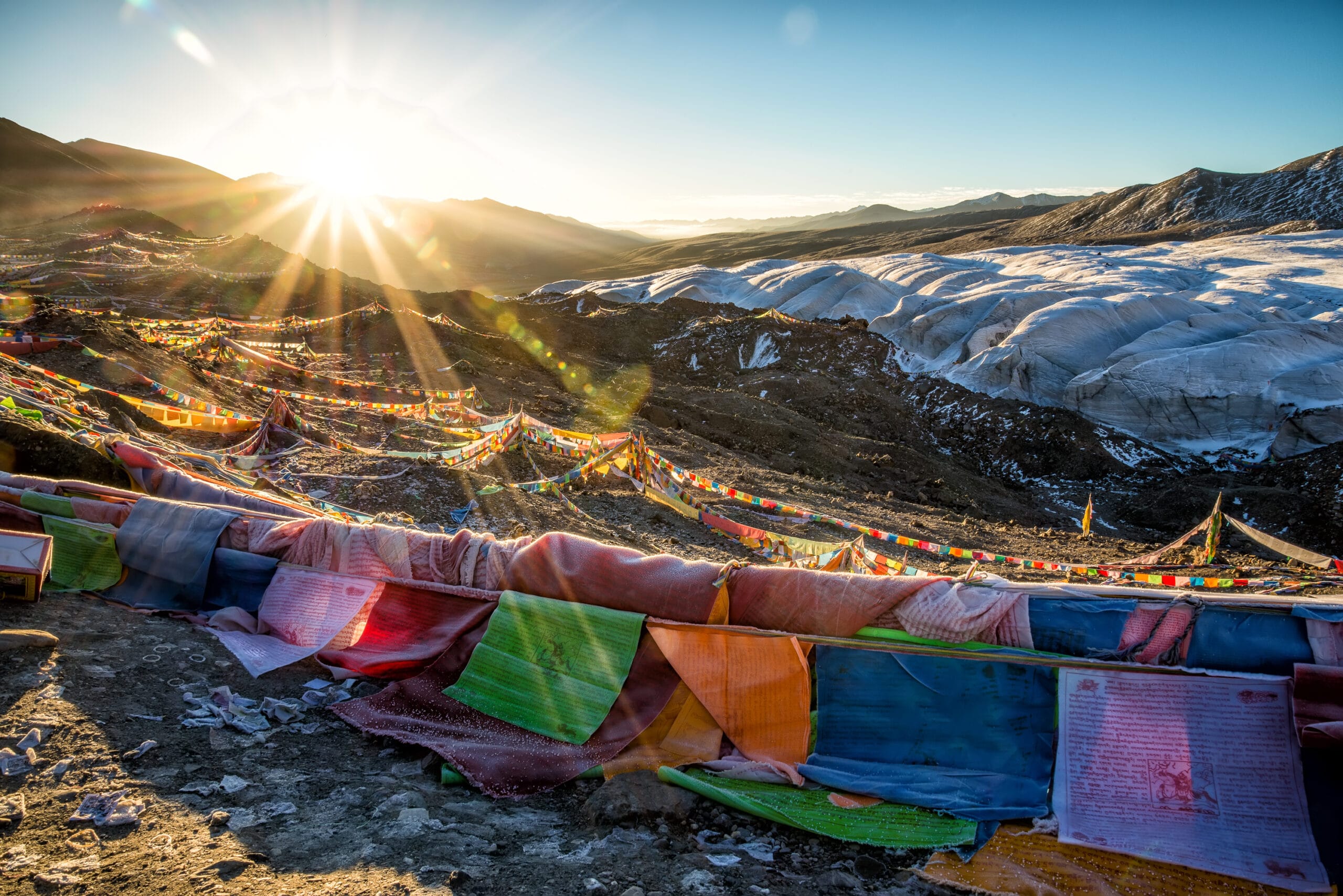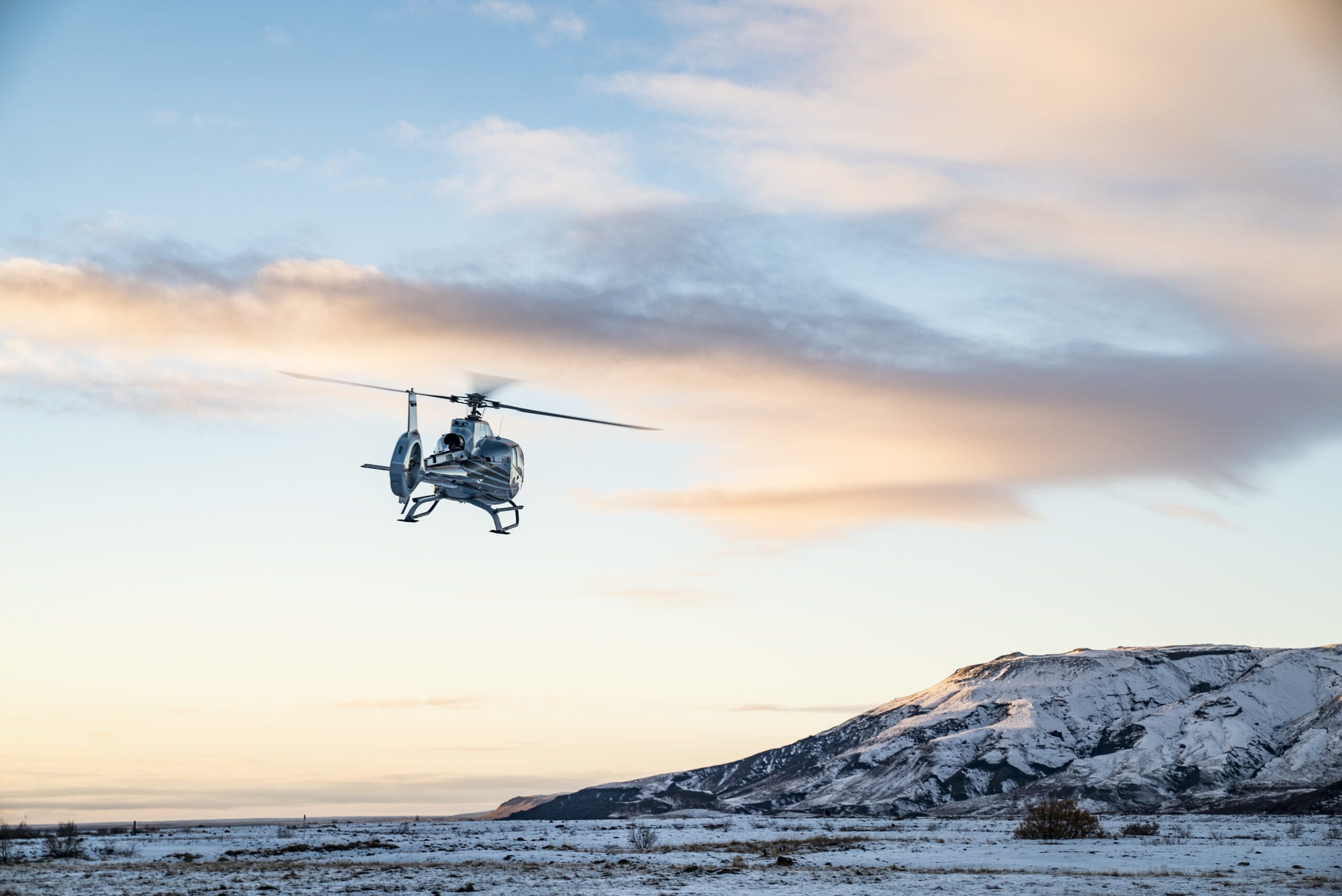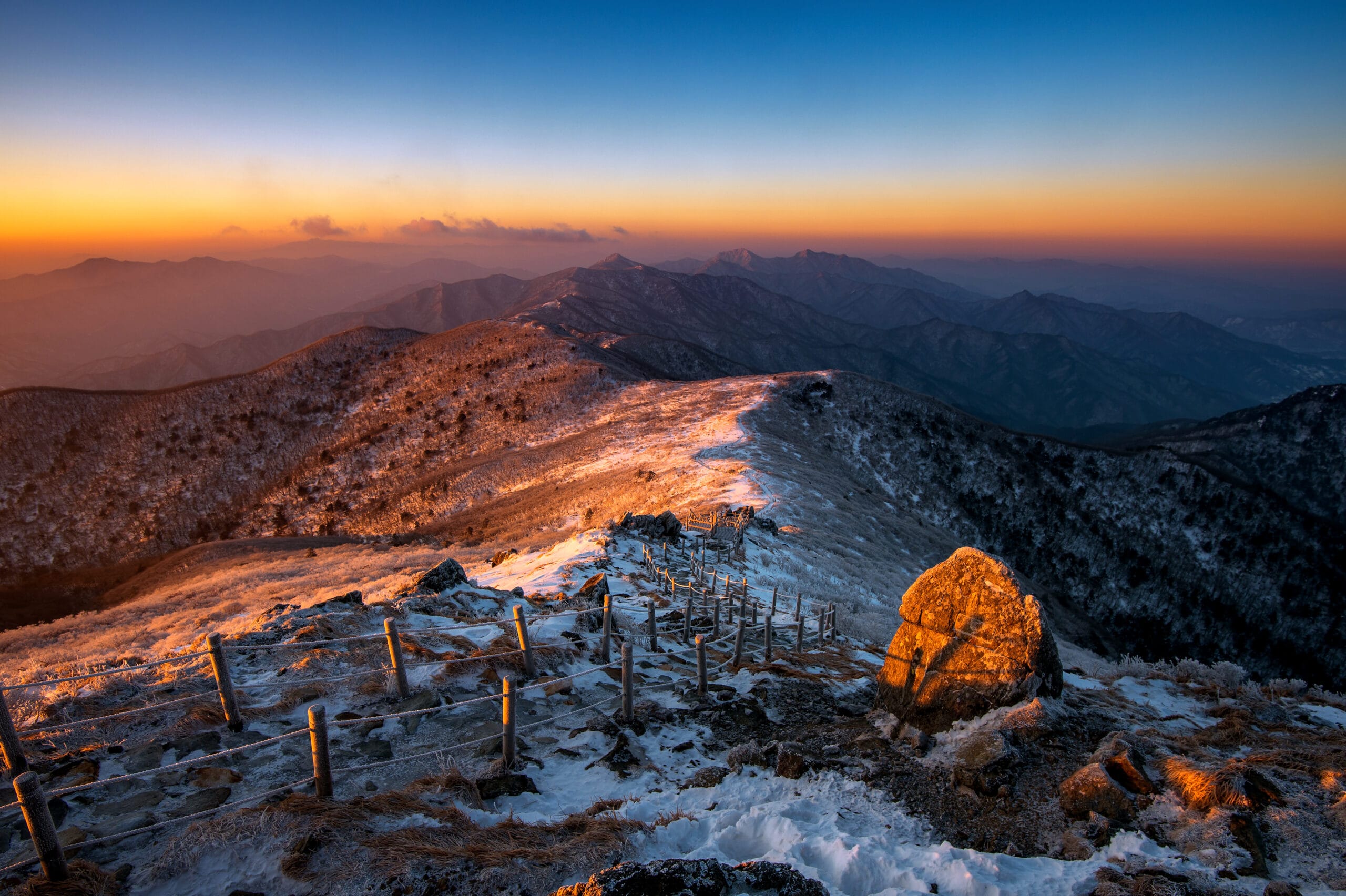Everest Base Camp Heli Return Trek – 12 D
Best Season
Highest Altitude
Trip Overview
The Everest Base Camp Heli Return Trek is an adventure-packed journey designed for those who want to experience the thrill of trekking to Everest Base Camp and then return to Lukla in style via a helicopter. The Everest Base Camp Heli Return 12-day trek offers a unique opportunity to trek through the stunning landscapes of the Everest region, reach Everest Base Camp, and enjoy a scenic helicopter ride back, allowing you to skip the return trek and maximize your time in the mountains.
Your adventure begins with a flight to Lukla, the gateway to the Everest region. From there, you will trek through the heart of the Khumbu Valley. As you ascend, vibrant Sherpa villages greet you, each rich in culture and tradition. Eventually, you will arrive at Namche Bazaar, often referred to as the “Sherpa capital.” Here, you can acclimatize while exploring its colorful markets and experiencing local life.
Continuing your journey, you will visit the spiritual Tengboche Monastery, one of the most important centers of Buddhism in the region. The towering peaks of Ama Dablam, Everest, and Lhotse frame the monastery, providing a stunning backdrop. The rugged terrain then leads you onward, bringing you closer to your ultimate goal. After several days of trekking, you will finally arrive at Everest Base Camp, standing proudly at 5,364 meters. Here, towering icefalls and glaciers surround you, creating a breathtaking scene. For many trekkers, reaching this point is a dream come true. However, the adventure does not end here. After a morning hike to Kala Patthar for panoramic views of Everest, you will board a helicopter at Gorak Shep.
The return journey is equally breathtaking. You will enjoy a thrilling helicopter ride back to Lukla, offering stunning aerial views of the Himalayas. This scenic flight provides a spectacular finale to your journey, ensuring a comfortable and memorable end to your adventure.
Trip Highlights:
- Trek through the heart of the Khumbu region, experiencing Sherpa culture and hospitality.
- Visit iconic sites like Namche Bazaar, Tengboche Monastery, and Kala Patthar.
- Reach Everest Base Camp at 5,364 meters, a dream destination for many trekkers.
- Enjoy a thrilling helicopter ride from Gorak Shep back to Lukla, with stunning aerial views of the Himalayas.
- Experience the rich biodiversity and dramatic landscapes of Sagarmatha National Park.
- Accommodation: Stay in comfortable teahouses during the trek; standard hotels in Kathmandu.
- Meals: Full-board meals (breakfast, lunch, and dinner) during the trek; breakfast in Kathmandu.
- Luggage: Porters provided for luggage transport (up to 15 kg per person).
- Internet/WiFi, Electricity, and Water: Available at most lodges along the trekking route (additional charges may apply); complimentary WiFi in Kathmandu hotels.
Essential Items:
- Base Layers: Thermal top and bottom
- Insulation: Fleece jacket and down jacket
- Outer Layer: Waterproof jacket and pants
- Trekking Clothes: Some pairs of trekking pants, quick-dry shirts
- Footwear: Trekking boots, camp shoes/sandals
- Headwear: Sun hat, warm hat, neck gaiter
- Hand-wear: Lightweight gloves, insulated gloves
Accessories: Sunglasses, sunscreen, lip balm , headlamp with extra batteries , trekking poles ,50-60L backpack + daypack
Personal Items: Hygiene essentials (toothbrush, toothpaste, wet wipes), Quick-dry towel ,Water bottle or hydration system (2L capacity), Snacks (energy bars, nuts)
Medical Kit: Personal medications, basic first aid, altitude sickness pills
Documents: Passport, trekking permits, travel insurance
Optional: Camera, power bank, Lightweight sleeping bag
Lukla Flight and Cancellation:
Flights to Lukla, the gateway to the Everest region, are a thrilling part of the Everest trekking experience. These flights usually operate from either Kathmandu or Ramechhap, depending on the season and air traffic regulations. Due to the high-altitude terrain and unpredictable mountain weather, Lukla flights are highly sensitive to weather conditions and are frequently delayed or even canceled—especially during the monsoon and winter seasons. We strongly advise trekkers to keep at least 1-2 buffer days in their itinerary to accommodate potential flight disruptions. In case of prolonged cancellations, helicopter charter options may be available at additional cost.
At Mount Elegance Trek and Expedition, we closely monitor flight schedules and weather updates to keep you informed and assist with alternative arrangements as needed, ensuring your journey remains smooth and stress-free.
Itinerary
- Drive Duration: 30-45 minutes
- Meal: Breakfast
- Highest Altitude: Kathmandu (1,400m/ 4,600ft)
Upon your arrival in Kathmandu, you will be greeted by a friendly representative and transferred to your hotel, typically located in the vibrant Thamel area, known for its shops, restaurants, and bustling streets. After checking in and settling in, you have the remainder of the day to rest and acclimatize to the new environment. Kathmandu is rich in culture and history, so if you're feeling up to it, you can take a casual walk around the area. You might even explore some nearby temples or markets. It’s advisable to avoid strenuous activities, as rest is crucial after your flight. In the evening, you will meet your trekking guide and other trekkers during a briefing session where you'll be given detailed information about the upcoming journey. The guide will go over the itinerary, introduce the trekking crew, and provide last-minute advice on how to prepare for the trek. This is an excellent time to ensure you have all the necessary gear and paperwork for the trek.
Since you’ll be flying to Lukla early the next morning, it’s essential to get a good night’s rest. Kathmandu’s altitude is 1,350 meters, which shouldn’t pose any acclimatization issues for most people, but be sure to stay hydrated and take things easy to help your body adjust. If you have any final questions or concerns about the trek, this is a great time to address them. You’ll also receive some important travel tips, including information about altitude sickness and how to avoid it during your trek. As you prepare for the adventure ahead, this day serves as a perfect introduction to the hustle and bustle of the Kathmandu Valley, setting the stage for the natural beauty and physical challenge of the trek.
- Flight Distance: 138 km (86 miles)
- Flight Duration/ Trek Duration: 25-30 minutes / 3-4 hours
- Meal: Breakfast, Lunch &Dinner
- Highest Altitude: Lukla (2,860m/9,383ft) & Phakding (2,610m/8,563ft)
The day begins with an early morning flight from Kathmandu to Lukla, one of the most thrilling and scenic flights you will experience. The flight offers an incredible view of the Himalayan range, and as you approach Lukla, the dramatic Tenzing-Hillary Airport perched on a cliffside becomes a memorable sight. After landing in Lukla, you will be greeted by your trekking crew and start your trek towards Phakding, a small village situated at 2,610 meters. The trek on the first day is a relatively easy one, with a gentle descent or mostly flat terrain, which allows you to gradually adjust to the altitude. The path takes you through beautiful Sherpa villages and dense forests of pine and rhododendron. You will cross several suspension bridges over the Dudh Koshi River, providing fantastic views of the surrounding landscapes.
Upon arrival at Phakding, you will check into a lodge and have the rest of the day to relax and explore the village. Phakding is a small yet scenic village, and you can enjoy the peaceful atmosphere and stunning views of the surrounding mountains. This day’s trek provides the perfect opportunity to acclimatize to the altitude gradually. The village is a popular stop for trekkers on their way to Namche Bazaar, and there are several lodges where you can rest and enjoy traditional Nepali meals. It’s essential to take things slowly and enjoy the surroundings, as the higher altitudes will gradually require more time to adjust. After a well-deserved rest, you’ll feel ready to continue the journey towards the Everest Base Camp, confident that you are adjusting well to the trek.
- Trek Distance: 10 km (6.2 miles)
- Trek Duration: 5-6 hours
- Meal: Breakfast, Lunch & Dinner
- Highest Altitude: Namche Bazaar (3,440m /11,283ft)
Today’s trek from Phakding to Namche Bazaar is one of the more challenging sections of the journey but incredibly rewarding. The trail gradually ascends along the Dudh Koshi River, passing through picturesque villages and terraced fields, with breathtaking views of the surrounding mountains. You will also cross several suspension bridges, one of which is particularly famous for offering magnificent views of Mount Everest, Lhotse, and Nuptse. The scenery becomes more dramatic as you gain elevation, and you will begin to feel the effects of the altitude as you approach the steep Namche Hill, the final stretch to Namche Bazaar. This section is tough, but the spectacular views and sense of accomplishment make it well worth the effort.
Upon reaching Namche Bazaar, you will be greeted by the bustling town, which serves as the gateway to the Everest region. Namche is a Sherpa town that sits at an altitude of 3,440 meters, offering some of the best views of the mountains in the region. It’s the largest settlement in the Khumbu region, and you’ll have the opportunity to explore its markets, cafes, and trekking gear shops. Namche Bazaar is also a key acclimatization stop, so after arriving, you will have some time to rest and explore the town. The Namche Bazaar area has a variety of lodges and guesthouses where you can relax and enjoy a warm meal. The vibrant atmosphere of the town, combined with stunning views of Ama Dablam and Mount Everest, provides an excellent introduction to the beauty and culture of the Khumbu region.
- Meal: Breakfast, Lunch & Dinner
- Highest Altitude: Namche Bazaar (3,440m /11,283ft)
On this day, you will have a well-deserved acclimatization day in Namche Bazaar. Altitude sickness can affect trekkers above 3,000 meters, so it’s important to take this day to rest and allow your body to adjust to the altitude. Namche Bazaar is a prime location for acclimatization because it’s situated at an elevation of 3,440 meters. You can spend the day exploring the town, visiting the Sherpa Culture Museum, or enjoying a walk to the Everest View Hotel, located at a higher elevation. The short hike to the hotel provides amazing views of Everest, Lhotse, Nuptse, and Ama Dablam. This acclimatization hike not only helps your body adjust but also provides spectacular panoramic views that will help you appreciate the beauty of the Himalayas.
Namche Bazaar is a great place to relax and enjoy the local culture. You might also choose to visit the local markets, where you can buy traditional handicrafts and trekking gear. This day also allows you to prepare for the next leg of the journey, ensuring that all your gear is ready and you’re physically prepared. The lodges in Namche Bazaar serve delicious meals, including Sherpa specialties like dal bhat, and it's a great time to interact with other trekkers. The rest day is essential for proper acclimatization, and the hike to the Everest View Hotel offers not just spectacular vistas but also gives you a good opportunity to gauge how well you're adjusting to the altitude.
- Trek Distance: 10 km (6.2 miles)
- Trek Duration: 5-6 hours
- Meal: Breakfast, Lunch & Dinner
- Highest Altitude: Tengboche (3,870m /12,694ft)
Today, the trail ascends gradually as you make your way to Tengboche, a beautiful village located at 3,870 meters. The path follows the Dudh Koshi River, passing through the forested areas of pine and rhododendron trees. You will encounter more suspension bridges, offering scenic views of the surrounding landscape, including the towering peaks of Ama Dablam and Lhotse. After a steady ascent, the village of Tengboche comes into view, where you’ll find the Tengboche Monastery, one of the most significant religious sites in the region.
Tengboche is famous for its spiritual ambiance and magnificent views of Mount Everest, Lhotse, Ama Dablam, and other Himalayan peaks. The monastery here plays an important role in the local Sherpa community, and you may have the chance to witness a prayer ceremony or explore the monastery. After reaching Tengboche, take time to relax and enjoy the stunning scenery. The altitude will begin to feel more pronounced, so it’s important to take things slowly and allow your body to adjust to the higher elevation.
- Trek Distance: 11 km (6.8 miles)
- Trek Duration: 6-7 hours
- Meal: Breakfast, Lunch & Dinner
- Highest Altitude: Dingboche (4,410m /14,470ft)
After breakfast, you’ll continue your journey to Dingboche, located at 4410 meters. The trail from Tengboche to Dingboche takes you through the Imja Khola Valley and offers amazing views of Ama Dablam and Island Peak. The landscape becomes more barren as you ascend, with a mix of small villages and scattered settlements along the way. As you move further into the Khumbu region, the terrain becomes rocky, with fewer trees and more alpine vegetation. Dingboche is situated in a high-altitude valley, and the scenery here is awe-inspiring, with massive peaks surrounding the area.
Upon arriving at Dingboche, you’ll notice the thinner air at this higher altitude, so it’s important to take it easy and stay hydrated. Dingboche is a popular resting point for trekkers, with several lodges providing warm meals and accommodation. The village offers panoramic views of the surrounding mountains, and after settling in, you can take a short walk to explore the area. As with previous acclimatization days, it is essential to take it slow and allow your body to adjust before continuing with the trek.
- Meal: Breakfast, Lunch & Dinner
- Highest Altitude: Dingboche (4,410m /14,470ft)
Today’s acclimatization day in Dingboche is vital for preparing your body for the higher altitudes ahead. Dingboche, located at 4,410 meters, is surrounded by breathtaking views of Ama Dablam, Island Peak, and the mighty Lhotse. The focus of the day is on allowing your body to adjust to the thinning air while still staying active. You can take a short hike to Nangkartshang Hill for a fantastic panoramic view of the surrounding peaks and valleys. This gentle ascent will help you further acclimatize while offering magnificent photo opportunities. The air may feel thinner, but the beautiful surroundings make the experience well worth the effort. Remember, the key to acclimatization is to go slow and drink plenty of water.
Dingboche is a small yet peaceful Sherpa village that provides ample time for rest and reflection. You can spend time exploring the village and interacting with locals, who are always friendly and welcoming. There are also some monasteries and stupas in the area, adding a cultural aspect to your exploration. The day will be a well-deserved break, ensuring that you are physically and mentally prepared for the upcoming challenging days. The terrain around Dingboche is rocky and barren, yet the clear skies and vast mountain vistas help you forget the challenges of the altitude. In the evening, enjoy a warm meal and relax in your lodge, knowing that the trek ahead is going to be even more exciting and rewarding.
- Trek Distance: 8 km (5 miles)
- Trek Duration: 5-6 hours
- Meal: Breakfast, Lunch & Dinner
- Highest Altitude: Lobuche (4,940m /16,207ft)
The trek from Dingboche to Lobuche is a gradual ascent through rugged landscapes and alpine terrain, taking you to an altitude of 4,940 meters. As you trek, the valley opens up, revealing a panoramic view of the towering peaks around you, including Pumori, Nuptse, and Lhotse. The trail is rocky, and you’ll cross small streams and glacial moraines, but the views of the surrounding mountains and glaciers more than make up for the tough terrain. The air becomes increasingly thinner as you ascend, so it’s important to pace yourself and take regular breaks. You will pass Dughla, a small settlement where many trekkers stop for a rest, before continuing on the final stretch to Lobuche.
Upon reaching Lobuche, you’ll have the rest of the day to relax and acclimatize to the high altitude. The village is small, and its remote location makes it a great place to enjoy some quiet time in the heart of the Himalayas. The views of Lobuche East and Lobuche West peaks are stunning, and the surrounding Khumbu Glacier adds to the beauty of the area. Lodges in Lobuche are basic but comfortable, and you can enjoy a warm meal while reflecting on your progress so far. Altitude will start to become more noticeable here, so it’s essential to take the time to rest and ensure you’re well-prepared for the final leg of the journey to Everest Base Camp.
- Trek Distance: 14.9 km (9.2 miles)
- Trek Duration: 6-7 hours
- Meal: Breakfast, Lunch & Dinner
- Highest Altitude: Everest Base Camp (5,364m /17,598ft)
Today is one of the most exciting days of the trek: the journey to Everest Base Camp! The trek from Lobuche to Everest Base Camp takes you along the edge of the Khumbu Glacier, and the path is often rocky, with occasional glacial moraine to navigate. As you get closer to base camp, the views become more dramatic, with towering peaks like Mount Everest, Lhotse, and Nuptse in full view. The final stretch is both physically demanding and exhilarating, as you make your way toward the iconic Everest Base Camp at an altitude of 5,364 meters. Once you arrive, you will be rewarded with breathtaking views of the world’s tallest mountain. The sense of achievement is overwhelming, as you stand at the foot of Mount Everest, surrounded by the grandeur of the Khumbu icefall and towering peaks.
After soaking in the moment and taking plenty of photos, you’ll retrace your steps back to Gorak Shep for the night. The descent back to Gorak Shep, though challenging due to the altitude, is relatively quick compared to the ascent. In Gorak Shep, you can celebrate your arrival at Base Camp, rest, and enjoy a warm meal in the cozy lodge. This day is incredibly special as you’ve reached one of the most iconic locations in the world, and the experience of standing in the shadow of Everest is something that will stay with you forever. Despite the fatigue from the day’s journey, the excitement and satisfaction of completing this monumental part of the trek will energize you for the next stages of the journey.
- Trek Distance: 2.5 km (1.5 miles)
- Trek Duration/ Flight Duration: 3-4 hours / 15-30 minutes
- Meal: Breakfast, Lunch & Dinner
- Highest Altitude: Kala Patthar (5,644m/18,517ft)
This day begins with a very early hike to Kala Patthar, one of the most iconic viewpoints in the Everest region. The Kala Patthar hike takes you to an elevation of 5,545 meters, and it’s a steep ascent, but the rewards are more than worth it. From the summit of Kala Patthar, you get an unparalleled panoramic view of Mount Everest, as well as Lhotse, Makalu, Ama Dablam, and many other towering peaks. The view at sunrise is especially magical, with the first light of the day illuminating the snow-capped peaks in a golden glow. You will have time to take photographs and bask in the majesty of the world’s highest mountains before descending back to Gorak Shep for a quick rest and breakfast.
After returning to Gorak Shep, it’s time to leave the high-altitude environment and make your way back to Lukla in style. Instead of trekking down, you will take a helicopter flight from Gorak Shep to Lukla, which offers a unique and thrilling way to see the Himalayas from above. The flight provides incredible aerial views of the Khumbu region, and you can spot Everest, Lhotse, Makalu, and the surrounding peaks from a completely different perspective. This helicopter ride is a memorable experience, and it provides an exciting end to the Everest trek. Upon landing in Lukla, you can enjoy a well-deserved rest before flying back to Kathmandu the next day.
- Flight Distance: 138 km (86 miles)
- Flight Duration: 25-30 minutes
- Meal: Breakfast & Dinner
- Altitude: Kathmandu (1,400m/ 4,600ft)
Today, you will fly back from Lukla to Kathmandu after an unforgettable trek. Depending on the weather conditions and flight availability, the flight depart from Lukla to Kathmandu or Manthali (a secondary airport located in Ramechhap). The flight offers one last chance to take in the spectacular views of the Himalayas, as the plane ascends and you can see the peaks from a different angle. The flight duration is typically around 30 minutes, and upon arrival in Kathmandu, you’ll be transferred back to your hotel. Once in Kathmandu, you can rest, shower, and relax after the thrilling journey. The bustling capital city will feel much different after your time spent in the remote, serene mountains. You can also explore the vibrant streets of Thamel one last time for some souvenirs or enjoy a celebration dinner with your trekking team.
This final evening in Kathmandu is an opportunity to reflect on your journey and the incredible accomplishment of completing the Everest trek. The memories of standing at Everest Base Camp and seeing the stunning views from Kala Patthar will stay with you forever. You might also want to take some time to rest and rejuvenate, as the altitude and the physical exertion of the trek can leave you feeling tired. The evening offers a chance to relax, share stories with fellow trekkers, and enjoy a farewell dinner organized by mount elegance team.
- Drive Duration: 30-45 minutes
- Meal: Breakfast
- Altitude: Kathmandu (1,400m/ 4,600ft)
On your final day in Nepal, you will be transferred to the Tribhuvan International Airport in Kathmandu for your departure. Depending on your flight time, you may have some free time to explore Kathmandu one last time or relax in the hotel before your journey home. You’ll leave Nepal with a sense of fulfillment and pride, having completed one of the most iconic treks in the world. The memories of Everest Base Camp, the breathtaking views from Kala Patthar, and the thrill of the helicopter ride will remain etched in your mind for years to come. As you board your flight, you’ll carry with you not only a sense of accomplishment but also a deep appreciation for the natural beauty, culture, and adventure that Nepal offers.
This marks the end of your Everest Base Camp trek, and the journey back home is filled with reflection on the experiences you’ve had, the challenges you’ve overcome, and the friendships you’ve made along the way. Whether you return for another adventure in the future or cherish this trek as a once-in-a-lifetime experience, the memories of Everest will always be with you.
Book Now
Send an Inquiry
Got A Question?

Mr. Shishir Dhakal
Price Inclusion
- Airport transfers in Kathmandu.
- Domestic flight (Kathmandu-Lukla-Kathmandu).
- Helicopter return from Gorak Shep to Lukla.
- Accommodation in a 3-star hotel in Kathmandu with breakfast.
- Teahouse accommodation during the trek.
- All meals (breakfast, lunch, and dinner) during the trek.
- An experienced, English-speaking, government-licensed trekking guide.
- Porter service (1 porter for 2 trekkers).
- Sagarmatha National Park permit and TIMS card.
- Seasonal fresh fruit as dessert every evening after dinner.
- Mount Elegance free Tshirt and Route map.
- Complimentary first aid box (Guide will carry during trekking).
- Oximeter to measure the Oxygen (For awareness of the high altitude sickness).
- All government taxes and service charges.
- Duffel bag and sleeping bag for trekking (Should be returned after trek completion).
- Farewell dinner at the end of the trek.
- Certificate after trek completion.
Price Exclusion
- International airfare and Nepal visa fees.
- Travel and rescue insurance.
- Lunch and dinner in Kathmandu.
- Personal expenses (laundry, phone calls, etc.).
- Tips for guides, porters, and drivers.
- Alcoholic drinks, bottled water, and beverages.
- Any other expenses not mentioned in the inclusions.
Additional Information
Trip Map
Meals and Accommodation on Everest Base Camp Heli Return Trek
The Everest Base Camp Heli Return Trek combines the classic EBC trekking experience with the luxury of a scenic helicopter return. Throughout the journey, you’ll stay in comfortable accommodations and enjoy nutritious meals to support your trek in high-altitude conditions.
Kathmandu Accommodations
In Kathmandu, you’ll stay at a standard hotel equipped with modern amenities such as complimentary WiFi, en-suite bathrooms, and breakfast service. This comfortable stay allows you to rest and prepare before and after the trek.
Teahouses and Lodges on the Trek
During the trek, you’ll lodge in traditional teahouses, offering cozy twin-sharing rooms with basic amenities like blankets and pillows. Shared bathrooms are standard, with hot showers and charging facilities available for an extra fee. Although accommodations become simpler at higher altitudes, the hospitality and warmth of the Sherpa-run teahouses ensure a comfortable stay.
Meals on the Trek
Meals are provided on a full-board basis (breakfast, lunch, and dinner) during the trek, ensuring balanced nutrition at high altitudes. Breakfast options include porridge, pancakes, and eggs, often with tea or coffee. Lunch and dinner feature local and international dishes, including Dal Bhat, noodles, and soups to maintain your energy levels. In Kathmandu, breakfast is included, and you can explore local or international dining options for other meals.
Best Season for Everest Base Camp Heli Return Trek
The best time for the Everest Base Camp Heli Return Trek is during the spring (March to May) and autumn (September to November) seasons. These periods offer stable weather, clear skies, and optimal conditions for trekking and helicopter flights.
Spring (March to May)
- Weather: Mild temperatures with clear skies and blooming rhododendrons along the trails.
- Temperature:
- Lower elevations (2,800m to 3,500m): 10°C to 20°C during the day, 0°C to 5°C at night.
- Higher elevations (up to 5,644m): -5°C to 10°C during the day, -15°C to -5°C at night.
- Highlights: Rhododendron blooms add color to the landscape, and clear skies allow for excellent views from Kala Patthar. Spring temperatures are ideal for trekking and heli flights, with vibrant flora enhancing the scenic beauty.
Autumn (September to November)
- Weather: Post-monsoon clear skies with stable, dry air.
- Temperature:
- Lower elevations (2,800m to 3,500m): 10°C to 20°C during the day, 0°C to 5°C at night.
- Higher elevations (up to 5,644m): -5°C to 10°C during the day, -15°C to -5°C at night.
- Highlights: Autumn offers crisp, clear skies for stunning mountain views, making it the most popular trekking season. Stable weather ensures excellent conditions for both trekking and helicopter rides, while the festive Nepali atmosphere adds cultural richness to the experience.
Winter (December to February)
- Weather: Cold with occasional snow at high altitudes, but generally clear skies.
- Temperature:
- Lower elevations (2,800m to 3,500m): 0°C to 10°C during the day, -5°C to 0°C at night.
- Higher elevations (up to 5,644m): -10°C to -5°C during the day, -20°C to -10°C at night.
- Challenges: Winter brings fewer crowds, but the colder temperatures can make trekking challenging. With proper gear, you’ll enjoy solitude and unique winter scenery.
Monsoon/Summer (June to August)
- Weather: Rainy, humid in lower regions, while higher altitudes in the rain shadow receive less precipitation.
- Temperature:
- Lower elevations (2,800m to 3,500m): 15°C to 25°C during the day, 5°C to 10°C at night.
- Higher elevations (up to 5,644m): -5°C to 10°C during the day, -10°C to -5°C at night.
- Challenges: Monsoon rains can make lower trails muddy and lead to possible flight delays. However, fewer crowds and lush landscapes may appeal to those seeking a quieter experience.
Equipment Checklist
Trekking in Nepal is an incredible adventure, taking you through diverse landscapes, from lush forests to rugged mountain trails. To fully enjoy the experience, it’s crucial to pack the right equipment. Here’s an essential checklist to help you prepare for your trek, ensuring you’re ready for the challenges and beauty of the Himalayas.
1. Clothing
- Base Layers: Moisture-wicking base layers (thermal tops and bottoms) are essential for regulating your body temperature. Opt for lightweight, breathable materials.
- Mid Layers: Fleece jackets or lightweight down jackets provide warmth in colder temperatures. These layers should be easy to add or remove as needed.
- Outer Layers: A waterproof and windproof jacket is essential to protect against rain, wind, and snow. Make sure it’s breathable to stay comfortable during strenuous activities.
- Trekking Pants: Lightweight, quick-drying pants are ideal. Consider packing thermal pants for colder regions or seasons.
- Gloves, Hats, and Buffs: Warm gloves, a woolen hat, and a buff or neck gaiter help protect against the cold at high altitudes.
- Trekking Socks: High-quality, moisture-wicking socks (at least three pairs) are crucial to prevent blisters and keep your feet dry.
2. Footwear
- Trekking Boots: Sturdy, well-fitted, and waterproof trekking boots with good ankle support are essential. Break them in before your trek to avoid blisters.
- Sandals or Camp Shoes: Lightweight sandals or camp shoes for relaxing at tea houses or lodges after a long day of trekking.
3. Backpack and Storage
- Daypack (20-30 liters): A small, comfortable daypack with rain cover to carry essentials like water, snacks, camera, and extra layers.
- Duffel Bag (60-80 liters): For your main gear, use a durable, waterproof duffel bag that will be carried by porters.
- Dry Bags or Ziplock Bags: For protecting electronics, documents, and clothes from moisture.
4. Trekking Gear
- Trekking Poles: Adjustable trekking poles reduce the strain on your knees, especially during steep descents.
- Headlamp with Extra Batteries: Essential for early morning starts, late finishes, or use in lodges where electricity may be limited.
- Water Bottles and Purification: Carry reusable water bottles and purification tablets or a water filter to ensure safe drinking water.
- Sleeping Bag: A four-season sleeping bag rated for temperatures as low as -10°C to -15°C is recommended for high-altitude treks.
5. Health and First Aid
- Personal First Aid Kit: Include essentials like band-aids, antiseptic wipes, blister treatment, pain relievers, and any personal medications.
- Sunscreen and Lip Balm: High SPF sunscreen and lip balm are essential to protect against strong UV rays at high altitudes.
- Hand Sanitizer and Wet Wipes: Useful for maintaining hygiene when water is limited.
- Altitude Sickness Medication: Consult your doctor about medications like Diamox for preventing altitude sickness.
6. Personal Items and Extras
- Snacks and Energy Bars: Pack lightweight, high-energy snacks for a quick boost on the trail.
- Sunglasses with UV Protection: Essential for protecting your eyes from the intense sunlight and snow glare at high altitudes.
- Camera or Smartphone: To capture the breathtaking scenery. Don’t forget extra batteries or a portable charger.
- Personal Toiletries: Include biodegradable soap, toothbrush, toothpaste, and a small towel.
- Cash: Carry enough local currency for expenses along the trail, as ATMs are not available in remote areas.
7. Documents
- Passport and Visa: Carry your passport, visa, and photocopies in a waterproof pouch.
- Permits: Obtain trekking permits such as the TIMS card and national park or conservation area permits, depending on your route.
- Travel Insurance Details: Ensure you have comprehensive travel insurance covering high-altitude trekking, emergency evacuations, and medical expenses.
Final Tips
- Pack Light: Try to keep your backpack under 10-15 kg. The lighter your pack, the more enjoyable your trek will be.
- Layer Up: Layering is key for comfort in Nepal’s changing weather conditions. Bring versatile clothing that can be easily added or removed.
- Double-Check Your Gear: Before you set off, double-check that you have all the essentials. Missing a crucial item could make your trek less comfortable or even dangerous.
Frequently Asked Questions(FAQs)
Do I need a visa to visit Nepal?
Yes, all foreign nationals require a visa to enter Nepal. You can obtain a visa upon arrival at Tribhuvan International Airport in Kathmandu, or at nearby borders. The visa fee varies depending on the duration of your stay, with options for 15-day, 30-day, and 90-day visas. To apply for a visa upon arrival, you’ll need a valid passport with at least 6 months’ validity, a recent photograph, and the visa fee in cash. We recommend checking the official government website for the latest visa requirements and fees. At Mount Elegance Treks and Expedition, we can also provide guidance on the visa application process and help ensure a smooth arrival in Nepal.
Does Mount Elegance Treks offer group discounts?
Here is a potential answer for the FAQ question:
Does Mount Elegance Treks offer group discounts?
Yes, we do! Mount Elegance Treks offers special group discounts for 8 or more people traveling together. By booking as a group, you can enjoy significant savings on our already competitive pricing. Whether you’re a school group, a corporate team, or a family reunion, we’d be happy to work with you to create a custom itinerary and provide a quote for your group. Simply contact us with your group details and we’ll take care of the rest!
What is included in Mount Elegance Treks packages?
Here is a potential answer for the FAQ question:
What is included in Mount Elegance Treks packages?
At Mount Elegance Treks, we strive to provide a comprehensive and hassle-free travel experience. Our packages typically include: airport transfers, accommodation in teahouses or lodges, meals (breakfast, lunch, and dinner), guided trekking with experienced guides and porters, national park fees, trekking permits, and emergency first aid kit. We also offer additional services such as hotel bookings in Kathmandu, transportation to and from trek starting points, and optional activities like cultural sightseeing tours. Please check the specific inclusions for your chosen trek itinerary, as some variations may apply. Our team is happy to provide more details and answer any questions you may have.
Does Mount Elegance Treks provide airport pickup?
Here is a potential answer for the FAQ question:
Does Mount Elegance Treks provide airport pickup?
Yes, we do! As part of our commitment to making your travel experience seamless, Mount Elegance Treks offers complimentary airport pickup and drop-off services for all our clients. Upon your arrival at Tribhuvan International Airport in Kathmandu, our representative will be waiting to greet you and escort you to your hotel. Similarly, upon your departure, we’ll ensure that you’re transferred to the airport on time for your flight. This service is included in your package, so you can relax and focus on the excitement of your upcoming adventure!
What equipment does Mount Elegance Treks provide?
Here is a potential answer for the FAQ question:
What equipment does Mount Elegance Treks provide?
At Mount Elegance Treks, we strive to ensure that you have everything you need to enjoy your trek to the fullest. Our package includes the use of necessary trekking equipment such as trekking poles, sleeping bags, down jackets, and first aid kits. We also provide durable and high-quality backpacks and duffel bags to carry your personal gear. Our guides are also equipped with communication devices, maps, and emergency shelter in case of unexpected weather conditions. However, we recommend that you bring your own personal clothing, shoes, and any specific gear that you prefer to use. If you have any questions or concerns about what to bring, feel free to contact us!
Are Mount Elegance Treks guides certified in first aid?
Here is a potential answer for the FAQ question:
Are Mount Elegance Treks guides certified in first aid?
Yes, our guides are highly trained and certified in wilderness first aid. We take the safety and well-being of our clients very seriously, and our guides undergo regular training to ensure they are equipped to respond to any medical emergency that may arise during the trek. Our guides are certified in basic life support, wound management, and altitude sickness prevention, among other topics. Additionally, we carry a comprehensive first aid kit with us on every trek, and our guides are trained to use it effectively. You can feel confident and secure knowing that you’re in good hands with Mount Elegance Treks!
What is Mount Elegance Treks' cancellation policy?
At Mount Elegance Treks, we understand that unexpected circumstances can arise, and we’re committed to being fair and flexible. If you need to cancel your trek, our cancellation policy is as follows: cancellations made 30 days or more prior to the departure date will receive a full refund minus the 20% deposit. Cancellations made between 29 days and 15 days prior to the departure date will receive a 50% refund. Cancellations made 14 days or less prior to the departure date are non-refundable. We also offer the option to transfer your booking to a future trek, subject to availability. We recommend that you purchase travel insurance to cover any unforeseen circumstances that may affect your trip. If you have any questions or concerns about our cancellation policy, please don’t hesitate to contact us!
Can Mount Elegance Treks arrange accommodation before and after treks?
Yes, we can definitely help you with accommodation arrangements before and after your trek. We have a network of hand-picked hotels, lodges, and tea houses that offer a range of options to suit different budgets and preferences. We can arrange for you to stay in Kathmandu or other cities before your trek, and also book your accommodation in local villages or towns along the way. Our team will work with you to tailor a customized accommodation plan that meets your needs and preferences. We can also provide recommendations and bookings for additional services such as airport transfers, city tours, and sightseeing activities. Just let us know what you’re looking for, and we’ll take care of the rest!
Does Mount Elegance Treks support responsible tourism practices?
Yes, at Mount Elegance Treks, we’re committed to responsible tourism practices that benefit both our clients and the local communities we visit. We believe in operating in a way that respects the environment, culture, and people of the regions we trek in. We work with local guides, porters, and suppliers to ensure that our treks have a positive impact on the local economy and help to preserve the natural beauty of the areas we visit. We also follow all necessary regulations and guidelines to minimize our environmental footprint and promote sustainable tourism practices. By choosing Mount Elegance Treks, you’re supporting a responsible and sustainable tourism operator that cares about the places we visit and the people we meet along the way.
What is the maximum altitude reached on the EBC trek?
The maximum altitude reached on the Everest Base Camp (EBC) trek is 5,364 meters (17,598 feet) at Everest Base Camp itself, and 5,545 meters (18,192 feet) at Kala Patthar, a steep hill that offers breathtaking views of Mount Everest. However, the highest point typically reached by trekkers is Kala Patthar, which is a subsidiary peak that provides a stunning panorama of the Everest massif. Our expert guides will monitor your progress and ensure that you acclimatize safely to the high altitude, making the experience enjoyable and memorable for all.
How can I prevent altitude sickness?
Preventing altitude sickness is a top priority for us at Mount Elegance Treks and Expedition. To minimize the risk, we recommend gradual ascension, allowing your body to acclimatize to the higher elevations. This includes taking regular rest days, drinking plenty of water, and eating a balanced diet. Our expert guides will monitor your progress and adjust the itinerary as needed to ensure a safe and comfortable trek. Additionally, we recommend that you avoid strenuous activity at high elevations, drink plenty of fluids, and get plenty of rest. We also provide altitude sickness prevention medications, such as Diamox, which can be prescribed by your doctor. Our goal is to ensure that you trek safely and enjoy the stunning scenery of the Himalayas, while minimizing the risk of altitude sickness.
Can Mount Elegance Treks arrange custom itineraries?
Here is a potential answer for the FAQ question:
Can Mount Elegance Treks arrange custom itineraries?
Absolutely! At Mount Elegance Treks, we understand that every traveler is unique, with their own interests and preferences. That’s why we offer custom itinerary planning services to tailor your Nepal travel experience to your specific needs and desires. Whether you’re looking to add or remove activities, extend your stay, or explore off-the-beaten-path destinations, our expert team is happy to work with you to create a personalized trip that exceeds your expectations. Simply contact us to share your ideas and let us take care of the rest!
What makes Mount Elegance Treks different from other trekking companies?
At Mount Elegance Treks and Expedition, we’re proud to stand out from the crowd with our unique approach to trekking and expedition services. While other companies may offer similar itineraries and tours, we focus on providing a personalized, authentic, and sustainable experience that sets us apart.
Our Commitment to Sustainability
We’re dedicated to responsible and sustainable tourism practices, which means we prioritize the well-being of our clients, local communities, and the environment. We work with locally-owned tea houses and lodges, which helps to support the local economy and preserves the natural beauty of the region.
Personalized Travel Experience
We believe that every traveler is unique, and we tailor our itineraries to meet the specific needs and interests of our clients. Whether you’re a seasoned adventurer or a first-time trekker, we’ll work with you to create a personalized itinerary that ensures an unforgettable experience.
Local Expertise and Knowledge
Our team of guides and staff are locals who have grown up in the mountains and have extensive knowledge of the region. They’ll share their insights and stories with you, providing a deeper understanding of the culture, history, and natural beauty of Nepal.
Innovative and Sustainable Practices
We’re constantly looking for ways to improve our operations and minimize our impact on the environment. We use eco-friendly materials, reduce waste, and support conservation efforts in the region.
Mount Elegance Treks’ Core Values
At Mount Elegance Treks, we’re guided by a set of core values that reflect our commitment to:
Quality: We strive for excellence in everything we do.
Integrity: We operate with transparency and honesty.
Respect: We respect our clients, local communities, and the environment.
Innovation: We’re always looking for new and better ways to provide exceptional service.
Experience the Mount Elegance Treks Difference
When you choose Mount Elegance Treks, you’re not just booking a trek – you’re joining a community of like-minded travelers who value sustainability, cultural exchange, and adventure. We look forward to welcoming you to Nepal and sharing our passion for trekking and exploration with you.
How experienced are Mount Elegance Treks guides?
At Mount Elegance Treks and Expedition, we take pride in our team of experienced and knowledgeable guides who are dedicated to providing you with a safe and enjoyable trekking experience in Nepal. Our guides are the backbone of our company, and we invest heavily in their training and development to ensure that they meet the highest standards of professionalism and expertise.
Guide Qualifications and Experience
Our guides have a minimum of 5 years of experience in leading treks and expeditions in Nepal, and many have been guiding for 10-20 years or more. They are all certified by the Nepal Government and have undergone extensive training in areas such as:
First Aid and Emergency Response: Our guides are trained in basic first aid and emergency response, and know how to handle situations such as altitude sickness, injuries, and illnesses.
Mountain Safety and Risk Management: Our guides are trained in mountain safety and risk management, and know how to assess and mitigate risks on the mountain.
Cultural Sensitivity and Awareness: Our guides are trained in cultural sensitivity and awareness, and know how to interact with local communities in a respectful and sensitive manner.
Language and Communication: Our guides are proficient in multiple languages, including English, Nepali, and other local dialects, and know how to communicate effectively with clients from diverse backgrounds.
Guide-to-Cliuent Ratio
We believe in providing a high guide-to-client ratio to ensure that each client receives personalized attention and care. Our standard ratio is 1 guide to 4 clients, but we can adjust this ratio to meet the needs of individual groups.
Mount Elegance Treks’ Guide Selection Process
We select our guides carefully, based on their experience, qualifications, and personal qualities. We look for guides who are not only knowledgeable and skilled, but also friendly, enthusiastic, and dedicated to providing exceptional client service. We are proud of our team of guides, and we know that they will provide you with a memorable and enjoyable trekking experience in Nepal.
Where can I rent trekking equipment in Kathmandu?
Kathmandu offers a wide range of shops and outlets where you can rent trekking equipment, including hiking boots, trekking poles, sleeping bags, and jackets. Some of the most reputable rental shops include Kathmandu Trekking Stores, Himalayan Adventure Rentals, and Nepal Trekking Store. These shops offer high-quality equipment at reasonable prices, and many also provide rental guidance and advice to ensure you get the right gear for your trek. At Mount Elegance Treks and Expedition, we can provide you with a list of recommended rental shops and help you navigate the process, so you can focus on preparing for your adventure. Our team is also happy to assist with gear fitting and ensure you’re properly equipped for a safe and enjoyable trek.
What food is available during treks in Nepal?
During treks in Nepal, you can expect to find a variety of traditional Nepalese cuisine, as well as international options, at teahouses and lodges along the trail. Local dishes such as dal bhat (lentil soup and rice), momos (Tibetan-style dumplings), and gorkhali lamb (curried lamb) are staples, while tea, coffee, and fresh juice are also widely available. Many teahouses also offer Western-style options, including pasta, sandwiches, and soups. For trekkers with specific dietary needs, it’s best to inform your guide in advance, and they can assist with arranging meals that cater to your requirements. At Mount Elegance Treks and Expedition, we can provide guidance on what to expect in terms of food options and ensure that you’re well-nourished throughout your trek, allowing you to focus on enjoying the stunning scenery and cultural experiences.
What is the Everest Base Camp trek difficulty level?
The Everest Base Camp trek is considered a moderate to challenging trek, requiring a good level of physical fitness and acclimatization to high altitude. The trek involves walking for 5-7 hours a day, with an elevation gain of up to 1,000 meters, and overnight stays at altitudes above 3,500 meters. The trek also involves crossing several suspension bridges, steep descents, and uneven terrain. While the trek is not technically difficult, the high altitude and physical demands can be challenging for some trekkers. We recommend that trekkers have some prior hiking experience and be in good physical shape to complete the trek. At Mount Elegance Treks and Expedition, we take the safety and well-being of our clients seriously, and our experienced guides will monitor your progress and provide support to ensure a successful and enjoyable trek to Everest Base Camp. We also offer gradual acclimatization and flexibility in the itinerary to help trekkers adapt to the high altitude.
How much does the Everest Base Camp trek cost?
The cost of the Everest Base Camp trek can vary depending on the type of accommodation, transportation, and services you choose. At Mount Elegance Treks and Expedition, our standard Everest Base Camp trek package starts from $1,200 per person, which includes:
* Airport transfers and transportation to and from Lukla
* Accommodation in tea houses and lodges
* Meals and snacks
* English-speaking guide and porter services
* Everest National Park fees and permits
* Emergency rescue insurance
Our premium package, which includes luxury accommodation and guided services, starts from $1,800 per person. We also offer customized itineraries and packages to suit your budget and interests. Please note that prices may vary depending on the time of year, weather conditions, and other factors. We recommend booking in advance to secure the best rates and availability. Our experienced staff will be happy to provide a detailed quote and answer any questions you may have about the cost of the Everest Base Camp trek.
What permits are needed for the Everest Base Camp trek?
To trek to Everest Base Camp, several permits are required to ensure a safe and regulated experience. At Mount Elegance Treks and Expedition, we take care of all the necessary permits and paperwork for you. The main permits needed for the Everest Base Camp trek include:
* Sagarmatha National Park Permit: This permit is required for all trekkers entering the national park, which covers the Everest Base Camp trek route.
* TIMS (Trekkers’ Information Management System) Card: This card is issued by the Nepal Government and is required for all trekkers in Nepal.
* Everest National Park Entrance Fee: This fee is paid by trekkers to enter the national park.
* Guide License: Our experienced guides hold a valid guide license, which is required for all guided treks in Nepal.
We also arrange for the necessary permits for the Lukla to Everest Base Camp route, including the Permits for the Kala Patthar and Gorekshep villages. Our team will handle all the paperwork and permit arrangements, so you can focus on enjoying your trek. With Mount Elegance Treks and Expedition, you can be sure that all necessary permits are in place, and you’re ready for an unforgettable adventure to Everest Base Camp.
What is the best time to do the Everest Base Camp trek?
The best time to trek to Everest Base Camp is from September to November and from March to May, when the weather is generally clear and stable. During these periods, the temperatures are mild, and the risk of snow and high winds is lower, making it ideal for trekking.
* **Spring (March to May)**: This is the peak trekking season, with warm sunshine and mild temperatures. The rhododendron forests are in bloom, adding a stunning display of color to the trek.
* **Autumn (September to November)**: The weather is usually clear and sunny, with comfortable temperatures. The mountain views are spectacular, and the chances of clear skies are high.
It’s best to avoid trekking during the monsoon season (June to August), as the rain and landslides can make the trails slippery and difficult to navigate. Additionally, the winter season (December to February) can be very cold, with temperatures often dropping below freezing.
At Mount Elegance Treks and Expedition, we recommend planning your Everest Base Camp trek during the spring or autumn seasons to ensure the best weather conditions and an unforgettable trekking experience. Our experienced guides will help you plan and prepare for your trek, regardless of the time of year you choose to go.
How do I reach the starting point of the Everest Base Camp trek?
The starting point of the Everest Base Camp trek is Lukla, a small town located in the Solukhumbu region of Nepal. To reach Lukla, you have several options:
Flights: Take a 30-minute scenic flight from Kathmandu’s Tribhuvan International Airport (KTM) to Tenzing-Hillary Airport (LUA) in Lukla. Flights are operated by domestic airlines, and tickets can be booked in advance through our team or at the airport.
Bus and Taxi: Take a bus or taxi from Kathmandu to Jiri, which is a 6-7 hour journey. From Jiri, take another bus or taxi to Lukla, which takes around 4-5 hours. This option is more time-consuming but offers scenic views of the countryside.
Private Car and Driver: Hire a private car and driver for a door-to-door service from Kathmandu to Lukla, which takes around 6-7 hours, depending on traffic and road conditions.
Airport and Lukla Flight Information:
Tribhuvan International Airport: Arrive at least 2 hours before your scheduled flight to Kathmandu.
Tenzing-Hillary Airport: The airport in Lukla has a limited capacity, and flights may be delayed or cancelled due to weather conditions.
Flight Cancellation: In case of flight cancellation, our team will assist with alternative arrangements, including accommodation and transportation.
Tips:
Acclimatize: It’s essential to acclimatize to the high altitude before starting the trek. Our team recommends spending a day or two in Kathmandu or Lukla before starting the trek.
Book in advance: Book your flights in advance to ensure availability, especially during peak travel seasons.
* Packing: Make sure to pack essential items, such as warm clothing, hiking boots, and a first-aid kit, as services may be limited in Lukla.
Our team at Mount Elegance Treks and Expedition can assist with flight bookings, transportation, and accommodation arrangements to ensure a smooth start to your Everest Base Camp trek.
How reliable are the flights to Lukla airport?
Flights to Lukla airport, also known as Tenzing-Hillary Airport, can be unpredictable due to the airport’s unique location and weather conditions. Our team at Mount Elegance Treks and Expedition recommends the following:
Flight Schedule: Flights to Lukla usually depart from Kathmandu’s Tribhuvan International Airport (KTM) in the morning, and the schedule may change depending on weather conditions.
Weather Conditions: Lukla airport is prone to weather delays and cancellations, especially during the monsoon season (June to August) and winter months (December to February).
Flight Cancellation: In case of flight cancellation, our team will work with you to find alternative arrangements, including accommodation and transportation.
Rebooking: If your flight is delayed or cancelled, you can rebook on a later flight, subject to availability.
Tips:
Book Flexible Flights: Book flights with flexible rebooking policies to accommodate any changes in your itinerary.
Check Weather Forecast: Check the weather forecast before your flight to Lukla, and be prepared for any changes.
Have a Contingency Plan: Have a contingency plan in place, including accommodation and food, in case of flight delays or cancellations.
Lukla Airport Information:
Tenzing-Hillary Airport: The airport in Lukla has a limited capacity, and flights may be delayed or cancelled due to weather conditions.
* Airport Facilities: The airport has basic facilities, including a few restaurants, shops, and restrooms.
Our team at Mount Elegance Treks and Expedition can assist with flight bookings, rebooking, and alternative arrangements to ensure a smooth journey to Lukla airport. We recommend checking with your airline and our team for the latest information on flights to Lukla.
How do I book domestic flights within Nepal?
Booking domestic flights within Nepal is a straightforward process. Our team at Mount Elegance Treks and Expedition is happy to assist you with booking flights. Here’s a step-by-step guide:
Contact Us: Simply contact us through our website, email, or phone, and let us know your travel details, including your departure and arrival dates, route, and class of service.
Choose Your Flight: We will provide you with a selection of flights to choose from, and help you select the best option based on your needs and budget.
Payment: Once you’ve confirmed your flight, we will guide you through the payment process, which can be made by credit card, bank transfer, or cash.
Booking Confirmation: After payment, we will send you a booking confirmation with your flight details, including your flight number, departure and arrival times, and seat allocation.
Domestic Flight Operators:
Nepal Airlines: The national carrier of Nepal, offering flights to major destinations, including Lukla, Pokhara, and Biratnagar.
Yeti Airlines: A popular domestic airline, offering flights to major destinations, including Lukla, Pokhara, and Bharatpur.
Simrik Air: A regional airline, offering flights to major destinations, including Lukla, Phaplu, and Jomsom.
Tips:
Book in Advance: Book your domestic flights in advance to ensure availability, especially during peak travel seasons.
Check Flight Schedule: Check the flight schedule in advance to plan your itinerary and avoid any last-minute changes.
Have a Backup Plan: Have a backup plan in place, including accommodation and transportation, in case of flight delays or cancellations.
Our team at Mount Elegance Treks and Expedition is committed to providing you with a seamless and stress-free booking experience. We are always available to answer any questions you may have and to assist with any changes to your flight booking.
What services does Mount Elegance Treks offer?
At Mount Elegance Treks and Expedition, we offer a wide range of services to make your adventure in Nepal a memorable and hassle-free experience. Our team of experts is dedicated to providing you with the best possible services, from trekking and peak climbing to cultural tours and wilderness expeditions.
Trekking and Expedition Services
We offer a variety of trekking and expedition services, including:
Trekking: We offer guided trekking services to popular destinations such as the Everest Base Camp, Annapurna Circuit, and Langtang Valley.
Peak Climbing: Our experienced guides and climbers will help you conquer some of the highest peaks in the world, including Island Peak and Mera Peak.
Wildlife Tours: Join us on a wildlife tour to see the majestic Bengal tiger, one-horned rhinoceros, and other endangered species in their natural habitats.
Cultural Tours: Explore Nepal’s rich cultural heritage on a guided tour, visiting ancient temples, monasteries, and traditional villages.
Logistical Services
We also offer a range of logistical services, including:
Hotel Booking: We can book your hotel accommodations in Kathmandu and other destinations in Nepal.
Transportation: Our team can arrange for transportation to and from the trekking start point, as well as during the trek.
Permits and Licenses: We will handle all necessary permits and licenses for your trek or expedition.
Camping and Lodging: We can provide camping and lodging facilities during your trek or expedition.
Support Services
Our team is dedicated to providing you with support services, including:
Guided Tours: Our experienced guides will accompany you on your trek or expedition, providing valuable insights and support.
Cuisine: We can provide you with delicious and nutritious meals during your trek or expedition.
First Aid: Our guides are trained in first aid and can provide medical assistance in case of an emergency.
Communication: We can provide you with communication facilities, including satellite phones and internet access.
Mount Elegance Treks’ Commitment to Quality
At Mount Elegance Treks and Expedition, we are committed to providing you with the highest quality services and experiences. Our team of experts is dedicated to ensuring your safety, happiness, and satisfaction. We look forward to welcoming you to Nepal and sharing our country’s beauty and culture with you.
Is travel insurance necessary for the Everest trek?
Yes, we strongly recommend that all trekkers purchase travel insurance that covers trekking and adventure activities in the Himalayas. While we take every precaution to ensure your safety, unexpected events such as altitude sickness, accidents, or natural disasters can occur. Travel insurance will provide financial protection in case of emergency evacuations, medical treatments, or trip cancellations. Our trekking packages do not include insurance, but we can provide recommendations for reputable insurance providers that cover trekking and adventure activities in the Everest region. We require all trekkers to have proof of insurance before departing for the trek, and we will work closely with your insurance provider in case of an emergency. Don’t risk your financial stability.
Experiences That Last a Lifetime
Verified Fantastic Annapurna Base Camp Trek Everything was perfectly organized, down to the last detail. Everything ran smoothly and was very well planned. The care and company were absolutely lovely 🙂 it was amazing time. 9 days of trekking with breathtaking views, delicious food along the way, and amazing guides.On top of that, I ended up in the hospital because of appendicitis, and I was never alone — the organizers surrounded me with exceptional care. Thank you Shishir 🙏🏻Verified Very amazing. Very beautiful places. Breathtaking views and the guide @ Mr. Santosh, very nice and amazing talent.The food and culture was purely loss of words to us. Thank you.Verified Najpiękniejsze góry świata, cudowny magiczny czas. Wspaniale doświadczenie, doskonała organizacja, przemili przewodnicy i porterzy, zawsze gotowi pomóc i wesprzeć radą. Wyprawa którą na zawsze pozostanie w moim sercu.Doznania których nie sposób doświadczyć nie biorąc udziału w tej wyprawie. Z pewnością polecę udział w tej przygodzie moim przyjaciołom.Verified Annapurna circuit, Nar Poo trek, Mardi himal, etc This company manages the entire process very responsibly and leads the contract in detail, very kindly and reliably. Finally all costs are more reasonable than other companiesVerified Mr tourism "I had an incredible experience with Mouth elegance during my Mr. Tourism journey! Their professionalism, expert guidance, and warm hospitality made every trek seamless and unforgettable. Highly recommended for anyone looking to explore Nepal’s breathtaking landscapes!"Verified Annapurna Rounding/Punhill.abc Dream-like sea trip February 13 Annapurna Rounding/Punhill.abcTrekkingMeeting with the president and guide Ray at Tammel Hotel...Knowing everything about travel Thank you for moving forward...I was able to leave the trekking. Thank you.Without completing a journey of 20 days With the hard work of well-led Ray GaidenWe had a comfortable and enjoyable trip.Thank you for the careful care of the local travel agent.I wish to visit again next time.We wish the unlimited development of the travel company.Verified The most wonderful and satisying Trek with the best team b I had the most amazing trip. I had been to Poonhill trek ! Thanks to Mr Shishir Dhakal, and Mount Elegance, such a supportive guy ! Without your help, i may not have such good trip ! my best memory of life !
